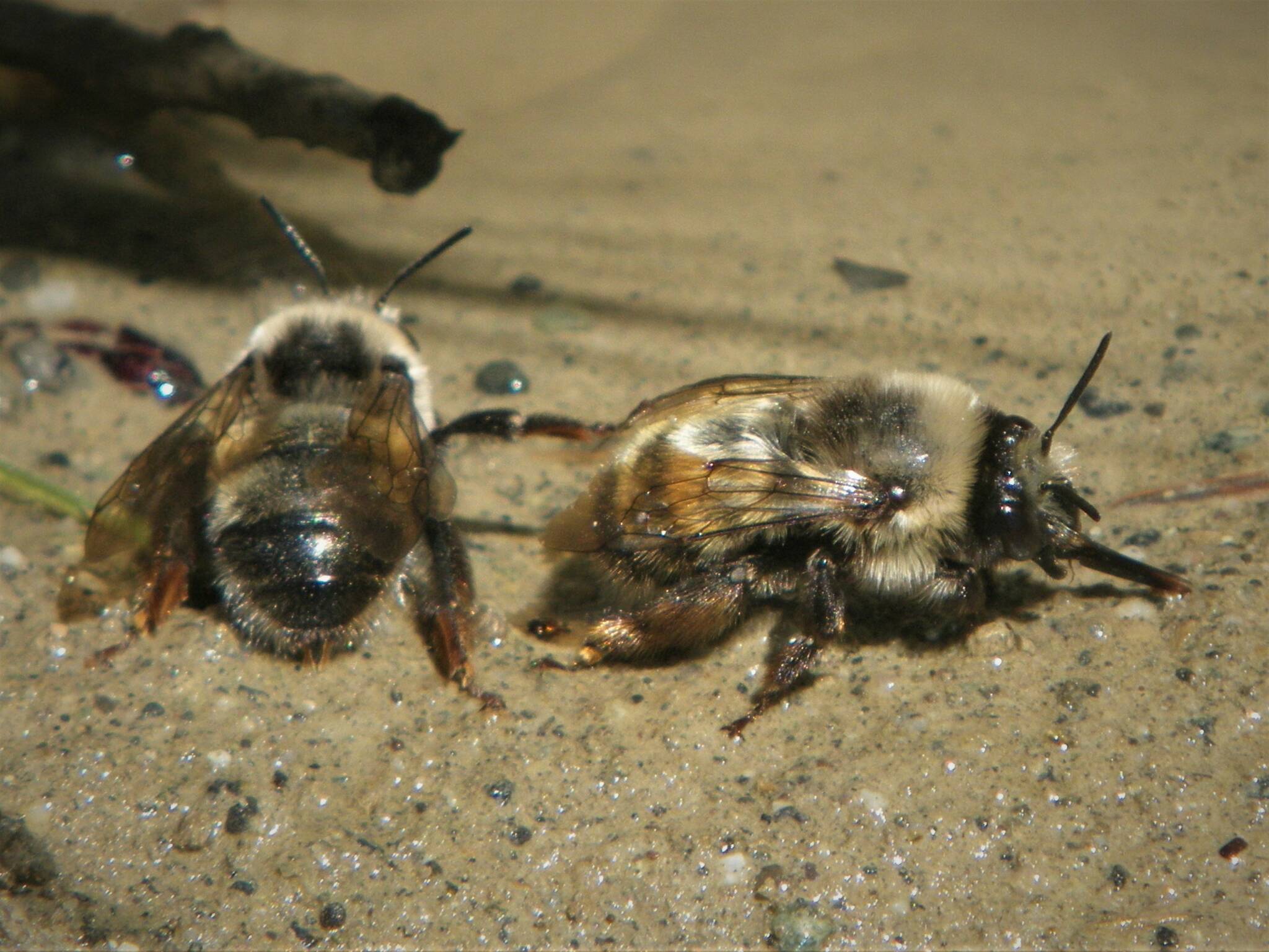by Russel Barsh
Director of Kwiaht
Every gardener is familiar with at least some of our native Bumblebees, which account for a large share of the pollinator services on small protected islands as well as flowerbeds in the county’s more developed “urban growth areas.” More about them when spring arrives! But first, I want to introduce a Bumblebee lookalike that can play just as important a role in coastal wildflower meadows and gardens close to the shore. Once you know how to identify them, you may find that many of the “bumblebees” in your garden are actually Anthophora, or Digger Bees, which belong to the same bee family as Bumblebees and domestic honeybees, but have a very different lifestyle.
It’s not difficult to tell Digger Bees and Bumblebees apart. Diggers have flat, squarish heads and large tongues. Although they are fuzzy, they tend to have “bare behinds” that are smooth, black and bald. They do not buzz or buzz-pollinate. But here is a remarkable fact: Digger Bees change the color of their fuzzy patches to match the patterns of the most common Bumblebees in their neighborhood. Lacking a painful sting, they mimic their cousins that do sting—although in truth, even Bumblebees only sting if handled or injured.
Unlike their wild and domestic cousins, Digger Bees do not form communal nests or hives that share the work of amassing pollen and nectar. Every Digger Bee female is a queen that digs her own long narrow tunnel nest—usually in our area, in the side of a soft, sandy seaside bluff. Each time she lays an egg at the end of her tunnel, she adds a gooey food pellet and seals off the tiny chamber. When her nest tunnel is full of egg chambers, she plugs it with a gob of mud that will dry hard and protect her brood until they are ready to emerge as adults the following spring.
A charming characteristic of Digger Bee colonies is “mudding”—dozens, even hundreds of bees crowding around a freshwater seep to scoop up tiny mouthfuls of mud for sealing their nests.
Although Digger Bees build individual nests, they are very gregarious; thousands may use the same bluff, digging tunnels within inches of one another. This may attract nest thieves such as “cuckoo bees” that sneak into the nests of hardworking queens to lay their own eggs; or wasps that lay their eggs inside larval bees. At the same time, with clouds of Digger Bees coming and going all day, an intruder is more likely to be detected and chased away.
Like Bumblebees, Digger Bees are both fuzzy and faithful, making them efficient pollinators. A halo of velvety hairs ensures that a bee will be completely covered in pollen after flower visits. Digger Bees, Bumblebees and honeybees groom themselves frequently during the day like cats, and pack the pollen into a special bristly pocket on their third leg pair. But not before they have visited more flowers of the same species, pollinating them. Some bees will take whatever they find in bloom; but Diggers and Bumblebees tend to choose one kind of flower at a time, visiting every patch of that species that they can find in an area of as much as a square mile.
Gardening near a sea bluff may attract both Diggers and Bumblebees, a dynamic duo of hardy, meticulous summer-long pollinators of ornamentals as well as fruiting trees and shrubs. And by the way, this is another reason for protecting the soft sandy bluffs along our seashores.
If you have questions about the conservation of pest-munching bats or insect pollinators around your home, farm or garden, send an email to: info@kwiaht.org




